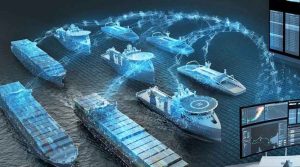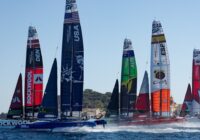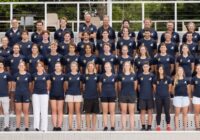Article by Hans Buitelaar – Metstrade
Combined digital equipment draws the future of luxury yachting
Italian yard Rossinavi launched Seawolf X, a 42-meter-long motor catamaran that uses artificial intelligence to determine routes, energy use and cabin temperatures. American studio DLBA presents concept yacht Tempo that can navigate autonomously using A.I. Will software define the future of the yachting experience?

Situational awareness is one of the most important capacities of a good skipper. Knowing the capabilities of your yacht, understanding the possible consequences of failing onboard systems, recognising the well-being of passengers and crew, reading the sea state and upcoming weather changes, acquiring lots of information that could affect a smooth passage – all of this and more comes together in the decision making of a captain aboard his vessel.
In our digital era, this encompassing process may be described as data analysis. Digitalisation of onboard systems has already resulted in interconnection of engines, communication and navigation instruments, household devices, tanks and pump systems as well as entertainment systems and climate control. Data from all these systems is handsomely shown on screens at the helm station, at the navigation desk and in the captain’s cabin. Has situational awareness become a screen?
Augmented reality in modern yachting: enhancing safety and navigation
Some information is not obtained by an experienced yachtsman’s eye. Racing sailors rely on their satellite connections to receive weather information with high- and low-pressure systems and gale warnings covering the whole ocean which they are navigating. They use this information to decide which route is the most favourable in getting to the finish fastest.
21st century offshore racing includes a lot of staring at screens. Thermal and optical sensors that detect floating objects like containers that have fallen off ships and float invisibly just under the surface provide an augmented reality presentation on a screen that alerts the helmsman of unseen dangers ahead. The detection system of the Austrian company SEA.AI consists of cameras and infrared sensors.
Integration of marine augmented reality tools with navigation software
The company recently announced to integration of their marine augmented reality tools with the navigation software of TimeZero. This French company was one of the pioneers of electronic maritime navigation and has cooperations with navigation equipment manufacturer Furuno from Japan.
The company is a merger of MaxSea, Nobeltec and MapMedia. Thanks to the integration of the navigation equipment with the augmented reality, data from AIS, radar, weather routing software and other tools is included in one overview, displaying all the information that can be seen, obtained or detected by sensors.
The press statement announcing the integration of the digital tools claims to improve human awareness: “The integrated digital tools allow mariners to seamlessly combine collision avoidance equipment such as AIS and radar with real-time visual data analysis. This integration bridges the gap in situational awareness, providing mariners with an unprecedented level of insight into their surroundings and greatly enhancing safety at sea.”
Calculated navigation with AI: safe and efficient yachting routes
With all systems connected, computers can start analysing data to present routes that are safe, provide the smoothest ride, follow the wind and the tides, arrive at their destination in time and with the least fuel consumption. Enter Artificial Intelligence into yachting.
Creating an electronic world model for autonomous yachting
Enabling autonomous navigation and enhancing onboard comfort are the goals that naval architecture and design studio DLBA had set in the development of their A.I.-driven superyacht TEMPO. It is an exploration of the possibilities of A.I. to set course autonomously and ensure to always provide the right atmosphere for crew and guests on board.;
In their presentation of the concept, the office writes: “Autonomous navigation systems create an electronic world model, fusing data from onboard sensors, and information sources like GPS, radar, AIS, electronic charts, weather information systems and video cameras to safely navigate both highly congested areas and open seas.
Navigation autonomy relieves the workload on the vessel operator. The operator is left to maintain a presence while the autonomous navigation system guides the vessel. The reduced level of focus required in this area results in higher situational awareness.
The benefits to this include a reduced risk of collision and grounding, avoidance of heavy weather, optimization of fuel consumption and lower operator workload.” This results in the owner and his guests having more time to enjoy the experience of yachting. The onboard systems can even detect which persons are entering a cabin, to adjust temperature and other preferred settings to that person’s liking. The motor yacht concept is set to be 58 meters long.;
Dialogue with AI: enhancing yacht operations and guest experience
Italian yard Rossinavi has already launched a motor catamaran with such capacities last May: the 42-meter long Seawolf X. The yacht is equipped with an intelligent energy management system that allows it to cruise for one whole day in full electric mode, go electric for 90 percent in multi-day trips or even cross the Atlantic Ocean while using electric power only for 80 percent of the way.
When docked in hibernation mode, the yacht can be used as a battery to provide electricity for a waterside home. Rossinavi has created an onboard A.I. system that analyses the yacht’s operations, learns from observations, and anticipates guest needs. It engages in dialogues with the crew to promote sustainable operations. The A.I. also monitors the battery pack to ensure optimal range and interacts with the crew.
Cybersecurity in AI-driven yachting: ensuring safe and secure voyages
Dependence on computer connections for travel does pose risks. The enormous congestion of air travel because of a computer security system update that went wrong on July 19th this year, illustrates that a software bug can lead to disaster.
Technological possibilities and advantages are clear, the risks may not be disregarded. Cyber security systems are crucial. It is also crucial to understand that they can always be hacked or show other failures. Upholding situational awareness as a personal merit remains a necessary quality for yachtsmen and mariners, a valued capacity that is also enjoyable to practise.











